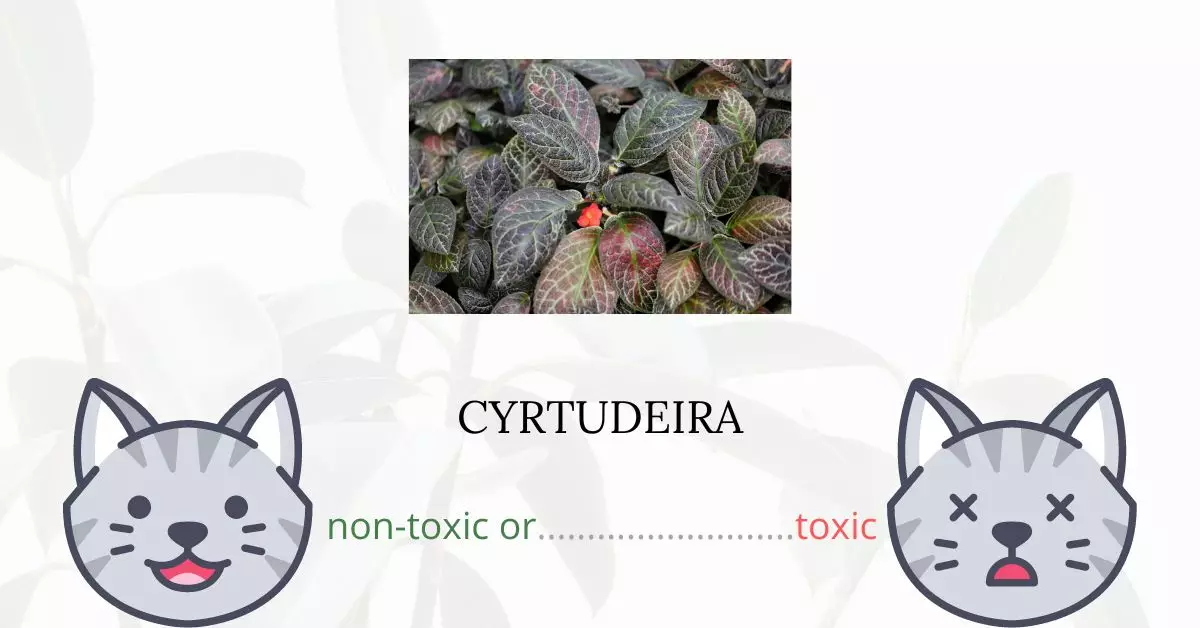Cyrtudeira, commonly known as Red African Violet, is not toxic for cats.
This conclusion has been reached in collaboration with a team of experienced DVMs (doctors of veterinary medicine). Through their expert insights, we are able to provide accurate and up-to-date information on the potential risks associated with various plants and their effects on cats. Additionally, our findings are bolstered by comprehensive research from high-authority sources such as ASPCA and PetMD.
The ASPCA (American Society for the Prevention of Cruelty to Animals) specifically lists Cyrtudeira in its non-toxic plants category, indicating its safety not only for cats but also for dogs and horses.
Can Cats Eat Cyrtudeira or Red African Violet?
While it is considered safe for your feline pals, you should still not allow your cat to eat a lot of cyrtudeira.
If your cat has eaten excessive amounts of plants, he or she may experience stomach issues and suffer from symptoms like vomiting and diarrhea. This should not cause you to worry though. As long as your cat was able to eject the plant matter from his or her system, the symptoms will eventually subside.
Be also mindful of certain fertilizers and pesticides that you use on plants. Some of them might contain harmful chemicals that can be hazardous for your fur babies. Residues from these products might cause poisoning in cats.
What is Cyrtudeira or Red African Violet?
Cyrtudeira is also known for its other common names like Acajou, Flame African Violet, Flame Violet, Frosty Lady, Lou Moss agate, and Red African Violet. It is botanically known as Episcia reptans from the Gesneriaceae family of African violets.
The majority of its species are endemic to Central and South America’s tropical areas. Espiscia is herbaceous perennials with a stoloniferous habit, usually red flowers, and marked or patterned leaves. They are planted as houseplants in the tropics and temperate climates, particularly for their lovely leaves. Numerous cultivars have been developed, largely by selection and hybridization of the Espiscia cupreata and Espiscia reptans species.
Keeping Cats Away From Cyrtudeira or Red African Violet
You may safeguard your lovely plants by teaching your cats to not touch or get near them. This may take quite some time but the fruits of your labor will benefit you, your plants, and of course, your feline buddies, too.
You should also put your plants in an inaccessible place for your cats. Using a natural deterrent is also a good way to prevent your felines from coming near them.
Another trick that you could use is wrapping double-sided sticky tape around your plant pots. Cats dislike its sticky surface so this will make them stop scratching or even touching your plants.
Plants to Avoid For Your Cats
If you are a cat owner and unsure if the plants growing in your yard are harmful to your cats, check out this list of toxic plants for cats. You can also check our list of non-toxic plants for cats.





